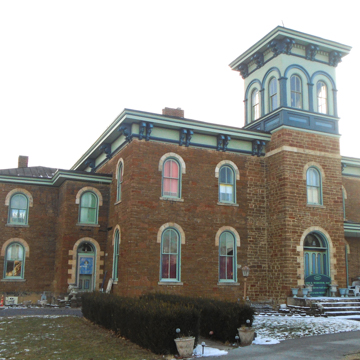You are here
Sill House (William and Caroline Jack House)
Banker William Jack and his wife, Caroline, came to Hollidaysburg in 1852, and four years later commissioned this twenty-two-room, well-proportioned Italian Villa house. Its two-foot-thick walls of slate block were in place by 1860, when the Jacks prepared for the coming Civil War. The four bull's-eye windows on the rear elevation have gun rests that overlook the Beaverdam Branch of the Juniata River. William Jack was active in the Underground Railroad, and a large brick room beneath his carriage house was accessible via a tunnel from the riverbank. The wood floor of the front hallway has a north-facing arrow inlaid in the wood, pointing the way to Canada and freedom for escaping slaves. The house remained in the Jack family until 1953, after which it had various uses, including for more than thirty years as the Evangelical Methodist Manahath (Hebrew for “God's resting place”) School of Theology. Purchased in 1996, the new owners restored the house to its 1890 appearance. Although the architect and contractor are unknown, the house clearly shows an architect's hand at work, and takes advantage of its site with a glazed belvedere on the roof and unique attic windows at the rear.
Writing Credits
If SAH Archipedia has been useful to you, please consider supporting it.
SAH Archipedia tells the story of the United States through its buildings, landscapes, and cities. This freely available resource empowers the public with authoritative knowledge that deepens their understanding and appreciation of the built environment. But the Society of Architectural Historians, which created SAH Archipedia with University of Virginia Press, needs your support to maintain the high-caliber research, writing, photography, cartography, editing, design, and programming that make SAH Archipedia a trusted online resource available to all who value the history of place, heritage tourism, and learning.















